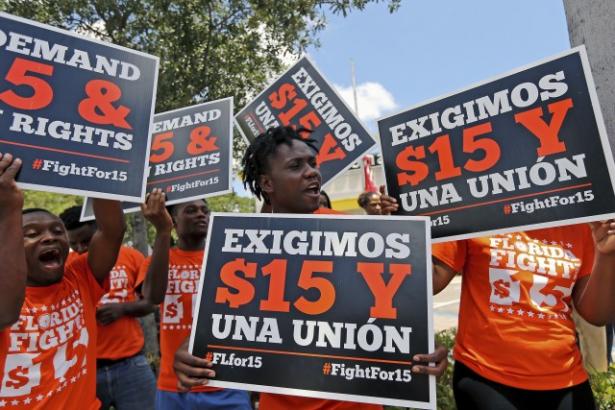Standard employment. Non-standard employment. Alternative work arrangements. Independent contractors. Contract employees. These can be confusing terms, without clear lines, and we owe thanks to David Weil, Heidi Shierholz, and John Schmitt for doing such an excellent job dissecting these terms and clarifying what is happening in the nation’s labor force.
While there will be continued debate about how to measure the number of non-standard workers, what employers are doing is crystal clear. They are, as David Weil explained so brilliantly in The Fissured Workplace, employing myriad strategies—contracting out, misclassifying, hiring through apps, employing temps and freelancers, trimming health and retirement benefits—all to minimize labor costs as well as lasting ties to their workers.
Heidi Shierholz and John Schmitt point out that the major increase in non-standard work has come not in workers’ main jobs, but in workers taking second and third jobs because their principal job pays too little. David Weil explains that fissuring is a reason that many workers’ main jobs don’t pay enough. As primary employers use temp agencies or contract out, they often turn to the lowest bidders (who often skimp on wages and benefits), and that means workers get the short end of the compensation stick. It’s precariousness raised to the second power.
In my upcoming book, I explore what can be done to increase bargaining power and pay for all these fissured workers, whether hotel workers employed by subcontractors, workers at McDonald’s franchises, or Uber and Lyft drivers.
It’s not easy for precarious workers to join together and exert the leverage needed to raise their pay. Many Uber drivers told me they made just $4 or $6 per hour some days after factoring in expenses: car, insurance, gasoline. I often wondered why Uber drivers didn’t do more to unionize during the Obama administration when the National Labor Relations Board might have ruled that Uber drivers were employees with a right to unionize (whereas Peter Robb, whom Trump appointed NLRB general counsel, just issued an advisory memo declaring that Uber drivers are independent contractors). Some organizers explained the problem to me: Contemplate the prospect of getting 30 percent (18,000) of New York’s 60,000 Uber drivers to sign cards saying they back a union—that’s the minimum needed to petition the NLRB for a unionization vote. That’s a daunting prospect.
In recent years, we’ve seen several unorthodox but effective strategies to lift the pay of fissured, precarious workers. First and foremost was the Fight for $15, which set out to increase the pay of millions of fast-food workers. That effort has gotten seven states—California, Connecticut, Illinois, Maryland, Massachusetts, New Jersey, and New York—to enact a $15 minimum wage.
Before New York enacted its $15 law, Governor Andrew Cuomo turned to an unusual tool to raise fast-food workers’ pay. He created a “wage board,” a Depression-era mechanism that some states used to set fair industrywide pay levels. Cuomo’s board held hearings across New York at which many fast-food workers testified they needed $15 an hour and couldn’t survive on the state’s $8.25 minimum wage. Restaurant industry executives pushed back, testifying that $15 was absurdly high. The wage board ruled that the state’s fast-food workers should receive $15 an hour, and Cuomo got the legislature to enact that recommendation. One union leader told me it resembled European-style sectoral bargaining. “It was like collective bargaining on steroids,” he said.
New York City’s Taxi and Limousine Commission embraced a variation of this strategy. Its chairman, Meera Joshi, saw how 85 percent of the city’s e-hail drivers were earning less than the state minimum wage, after expenses. Alarmed by this, the commission—with the city council’s blessing—voted last December to set a $17.22 minimum hourly wage, after expenses, for app-based drivers. Now many Uber and Lyft drivers in other cities are looking to this model as a quicker way to raise pay than unionizing.
In another variation, Seattle’s city council voted last summer to create a “standards board” to improve pay and conditions for Seattle’s 30,000 domestic workers. That 13-member board will make recommendations on minimum pay, overtime, paid time off, and health benefits for nannies and housekeepers, with the expectation that the city council will enact those proposals.
If cities can create such boards to help nannies and housekeepers, there is no reason why they can’t do so for other workers, whether temps, fast-food workers, nail salon employees or Uber drivers. Some labor strategists note that such boards might be used to mobilize and even unionize workers, perhaps getting Uber drivers to rally and form a union (outside the NLRB process) to press these boards to raise their pay, just as the Fight for $15 rallied workers to press New York’s wage board and Cuomo to raise their pay to $15. —Steven Greenhouse


Spread the word